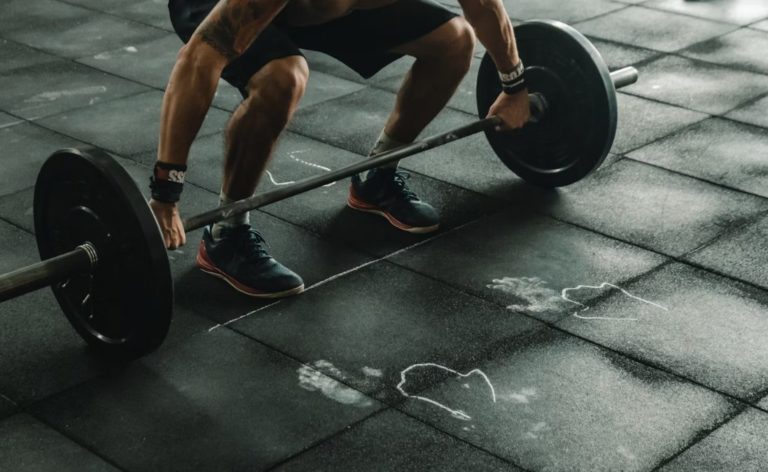Resistance Bands for Rehabilitation
In times of injury or rehabilitation, the road to recovery can feel overwhelming and isolating. It’s during these moments that finding a supportive community and effective tools becomes paramount. That’s where resistance bands come in. With their versatility and adaptability, these humble pieces of equipment can provide a lifeline for those seeking to regain their strength and mobility. In this blog post, we’ll explore the various ways resistance bands can aid in rehabilitation, offering a helping hand in your journey towards healing and recovery. So, let’s dive in and discover the incredible potential of resistance bands for rehabilitation.
The Benefits of Regular Exercise
Exercise is an essential component of a healthy lifestyle, providing numerous benefits for both our physical and mental well-being. Incorporating regular exercise into your routine can have a significant impact on your overall health, allowing you to live a more fulfilling and balanced life. In this blog section, we will explore the various benefits of exercise and how it can positively influence different aspects of your life.
Physical Health Benefits
Regular exercise offers a multitude of physical health benefits that can greatly improve your quality of life. Here are some key advantages:
- Weight Management: Engaging in physical activity helps burn calories, contributing to weight loss or maintenance. It can also increase metabolism, allowing your body to efficiently utilize energy.
- Cardiovascular Health: Exercise strengthens your heart and improves blood circulation, reducing the risk of heart disease, high blood pressure, and stroke.
- Muscle Strength and Flexibility: By engaging in resistance training and stretching exercises, you can enhance muscle strength, tone, and flexibility. This can improve posture, reduce the risk of injuries, and promote better balance and coordination.
- Bone Health: Weight-bearing exercises, such as walking, running, or weightlifting, help strengthen bones, preventing conditions like osteoporosis and reducing the risk of fractures.
- Improved Immune System: Regular exercise can boost your immune system, making you less susceptible to illnesses and infections.
Mental Health Benefits
Exercise not only has physical benefits but also plays a crucial role in maintaining good mental health. Here’s how regular exercise can positively impact your mind:
- Reduced Stress and Anxiety: Physical activity stimulates the production of endorphins, also known as “feel-good” hormones, which can alleviate stress, anxiety, and depression. Exercise can act as a natural antidepressant, improving overall mood and promoting relaxation.
- Enhanced Cognitive Function: Regular exercise has been linked to improved memory, concentration, and overall brain function. It increases blood flow to the brain, promoting the growth of new neurons and enhancing cognitive abilities.
- Better Sleep: Engaging in physical activity can regulate your sleep patterns, helping you fall asleep faster and enjoy a deeper, more restful sleep. This can lead to increased energy levels and improved overall productivity.
- Boosted Self-Esteem: Exercise can boost your self-confidence and self-esteem by promoting a sense of accomplishment and improving body image. Achieving fitness goals and witnessing physical improvements can greatly enhance your self-perception.
Lifestyle Benefits
Incorporating regular exercise into your lifestyle can have far-reaching effects beyond physical and mental health. Here are some lifestyle benefits you can enjoy:
- Increased Energy Levels: Engaging in regular physical activity can enhance your stamina and energy levels, making everyday tasks feel more manageable. You’ll find yourself feeling more energetic and productive throughout the day.
- Improved Productivity: Exercise has been shown to improve focus, concentration, and overall cognitive abilities. By incorporating exercise into your routine, you can achieve higher levels of productivity and efficiency in both your personal and professional life.
- Social Interaction: Many forms of exercise provide opportunities for social interaction, whether it’s joining a sports team, attending fitness classes, or simply going for a walk with a friend. This can combat feelings of loneliness and isolation, fostering a sense of community and belonging.
- Longevity and Quality of Life: Regular exercise has been linked to increased lifespan and a reduced risk of chronic diseases. By investing in your physical and mental well-being through exercise, you can enjoy a longer, healthier, and more fulfilling life.
In conclusion, regular exercise offers a wide range of benefits for both your physical and mental health, as well as your overall quality of life. By incorporating exercise into your daily routine, you can improve your physical fitness, enhance your mental well-being, and enjoy the many positive effects it has on your lifestyle. So, why wait? Start reaping the rewards of exercise today and unlock a healthier, happier you.
The Importance of Regular Exercise
Regular exercise is not only beneficial for our physical health but also plays a crucial role in maintaining our mental well-being. In this blog section, we will explore the various reasons why incorporating exercise into our daily routine is essential and how it can have a positive impact on our lives.
Physical Health Benefits
- Weight Management: Engaging in physical activities such as jogging, cycling, or swimming helps burn calories, promoting weight loss or maintenance. Regular exercise also boosts metabolism, making it easier to manage weight in the long run.
- Reduced Risk of Chronic Diseases: Studies have shown that physical activity can significantly reduce the risk of chronic conditions such as heart disease, type 2 diabetes, and certain types of cancer. Regular exercise strengthens the immune system and improves overall cardiovascular health.
- Stronger Bones and Muscles: Engaging in weight-bearing exercises, such as strength training or resistance workouts, promotes bone density and helps prevent conditions like osteoporosis. Regular exercise also strengthens muscles, enhancing overall physical strength and endurance.
Mental Well-being Benefits
- Stress Relief: Physical activity triggers the release of endorphins, also known as “feel-good” hormones, which help alleviate stress and improve mood. Regular exercise can act as a powerful stress management tool, reducing anxiety and promoting relaxation.
- Improved Cognitive Function: Exercise has been linked to enhanced brain function, including improved memory, concentration, and overall cognitive performance. It stimulates the growth of new brain cells and increases blood flow to the brain, fostering mental sharpness.
- Boosted Mood and Mental Health: Regular physical activity has been shown to reduce symptoms of depression and anxiety. It can increase self-esteem, boost confidence, and provide a sense of accomplishment, leading to improved overall mental health.
Incorporating Exercise into Daily Life
- Finding an Enjoyable Activity: To make exercise a habit, it is crucial to find a physical activity that you enjoy. Whether it’s dancing, hiking, or playing a sport, finding something you love will increase the likelihood of sticking to it in the long term.
- Setting Realistic Goals: Start with small, achievable goals and gradually increase the intensity and duration of your workouts. This approach ensures a sense of accomplishment and prevents burnout or injury.
- Creating a Schedule: Treat exercise as an important appointment in your daily routine by scheduling it in advance. This helps establish consistency and ensures you make time for physical activity amidst your busy schedule.
The Importance of Regular Exercise
Regular exercise is crucial for maintaining a healthy lifestyle. It offers a wide range of physical and mental benefits, making it an essential aspect of our daily routines. Whether you prefer hitting the gym, going for a run, or even taking a dance class, engaging in regular physical activity can significantly improve your overall well-being. In this blog section, we will explore the various advantages of exercise and how it can positively impact different aspects of your life.
Physical Health Benefits
Regular exercise provides numerous physical health benefits that can enhance your quality of life. Some of the key advantages include:
- Weight Management: Engaging in physical activity helps burn calories, contributing to weight loss or maintenance. Exercise also increases muscle mass, which further boosts metabolism and supports weight management.
- Cardiovascular Health: Regular exercise strengthens the heart, improves blood circulation, and reduces the risk of cardiovascular diseases such as heart attacks and strokes.
- Bone and Muscle Strength: Weight-bearing exercises, such as weightlifting or jogging, promote bone density and help prevent osteoporosis. Additionally, strength training exercises enhance muscle strength and prevent muscle loss associated with aging.
- Improved Balance and Flexibility: Activities like yoga and Pilates focus on balance and flexibility, which can reduce the risk of falls and improve overall mobility.
Mental Health Benefits
In addition to its physical advantages, exercise also has a profound impact on mental health. Here are some of the mental health benefits of regular exercise:
- Stress Reduction: Exercise releases endorphins, also known as “feel-good” hormones, which help reduce stress, anxiety, and depression. It can serve as an effective tool for managing daily stressors.
- Enhanced Mood: Physical activity stimulates the production of serotonin and dopamine, neurotransmitters responsible for regulating mood. Regular exercise can help alleviate symptoms of depression and boost overall mood and happiness.
- Improved Cognitive Function: Exercise increases blood flow to the brain, promoting the growth of new brain cells and improving cognitive function, memory, and concentration.
- Better Sleep: Engaging in regular physical activity can improve sleep quality and duration, leading to increased energy levels and improved overall well-being.
Incorporating Exercise into Your Routine
Now that we understand the importance of exercise, let’s explore how we can incorporate it into our daily routines. Here are some practical tips:
- Find an activity you enjoy: Whether it’s dancing, cycling, or swimming, choose an exercise that you genuinely enjoy. This will make it easier to stick to your routine and have fun while getting fit.
- Set realistic goals: Start with small, achievable goals and gradually increase the intensity and duration of your workouts. This approach will help you stay motivated and prevent burnout or injuries.
- Create a schedule: Dedicate specific time slots for exercise in your weekly schedule. Treating it as a non-negotiable appointment will make you more likely to prioritize your workouts.
- Mix it up: Avoid monotony by diversifying your exercise routine. Try different activities or switch between cardio, strength training, and flexibility exercises to keep things interesting and challenge your body.
- Stay accountable: Find a workout buddy or join a fitness community to stay motivated and hold yourself accountable. Sharing your progress and challenges with others can provide support and encouragement along the way.
The Importance of Regular Exercise
Regular exercise is crucial for maintaining good physical and mental health. In today’s fast-paced world, it can be challenging to find time for exercise, but the benefits make it well worth the effort. This blog section will explore why regular exercise is essential for everyone, regardless of age or fitness level.
Physical Benefits
- Weight Management
- Regular exercise helps burn calories, making it easier to maintain a healthy weight.
- Engaging in activities like running, cycling, or swimming can be effective in shedding excess pounds.
- Strength training can help build lean muscle mass, increasing metabolism even at rest.
- Cardiovascular Health
- Regular exercise strengthens the heart and improves blood circulation.
- Engaging in aerobic activities like brisk walking or jogging can reduce the risk of heart disease.
- Improved cardiovascular fitness enhances endurance and stamina.
- Bone and Joint Health
- Weight-bearing exercises, such as walking or weightlifting, promote bone density and strength.
- Regular exercise helps prevent conditions like osteoporosis and reduces the risk of fractures.
- Strengthening muscles around joints can alleviate pain and improve joint flexibility.
Mental Health Benefits
- Stress Reduction
- Exercise stimulates the production of endorphins, the “feel-good” hormones that reduce stress and anxiety.
- Engaging in activities like yoga or Pilates can help relax both the body and mind.
- Regular exercise can improve sleep quality, further reducing stress levels.
- Enhanced Cognitive Function
- Physical activity increases blood flow to the brain, improving cognitive function and memory.
- Studies have shown that exercise can reduce the risk of cognitive decline and dementia.
- Engaging in activities that challenge coordination and balance, like dancing or martial arts, can have additional cognitive benefits.
- Mood Elevation
- Regular exercise can help alleviate symptoms of depression and boost overall mood.
- Endorphins released during exercise contribute to feelings of happiness and well-being.
- Participating in group exercise activities, such as team sports or fitness classes, can also provide social interaction and support.
Making Exercise a Habit
- Setting Realistic Goals
- Start with small, achievable goals to build confidence and motivation.
- Gradually increase the intensity and duration of exercise over time.
- Be consistent and make exercise a regular part of your routine.
- Finding Enjoyable Activities
- Experiment with different types of exercise to find what you enjoy most.
- Whether it’s hiking in nature, dancing, or practicing martial arts, finding an activity you love increases the likelihood of sticking with it.
- Consider joining a sports club or fitness group for added motivation and accountability.
- Incorporating Exercise into Daily Life
- Take the stairs instead of the elevator, walk or bike to work, or park farther away to incorporate more physical activity into your daily routine.
- Use fitness apps or wearable devices to track your progress and stay motivated.
- Remember that every little bit of exercise counts, so make the most of your free time.
Enhancing recovery and restoring strength
In conclusion, this blog post has highlighted the various benefits of using resistance bands for rehabilitation. It has emphasized how resistance bands can aid in building strength, improving flexibility, and promoting overall recovery. Taking into account these factors, it is recommended that individuals recovering from injuries or undergoing rehabilitation consider incorporating resistance bands into their exercise routine. By using these versatile and effective tools, individuals can enhance their rehabilitation journey and achieve optimal results.








I appreciate the inclusion of specific exercises and instructions on how to use resistance bands for various types of injuries or conditions. It makes it easier to understand how to incorporate them into a rehabilitation routine.
It would have been helpful to see some real-life examples or case studies of individuals who have successfully used resistance bands for rehabilitation. This could have added more credibility to the article.
This article provides a thorough explanation of the benefits of using resistance bands for rehabilitation. It highlights how they can help improve strength and flexibility in a safe and effective way.
Overall, this article provides valuable information on the use of resistance bands for rehabilitation. It encourages me to give them a try and incorporate them into my own recovery routine.
I would have liked to see more information on the different types of resistance bands available in the market and their specific features. It would have helped in making an informed decision when purchasing them.